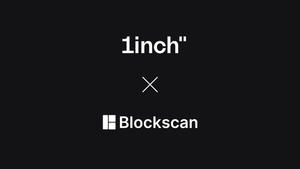Why сrypto projects collapse or vanish

Some crypto projects launch with fanfare, only to vanish later and leave behind inactive tokens.
Dazzling launches and viral hype are common in the crypto market. But behind many of them lie projects that fade away, leaving investors with hollow promises and devalued tokens. These are “abandoned coins” – digital assets whose projects have effectively died, often leaving only traces of what might have been.
What drives a coin to abandonment? The reasons vary, but familiar patterns emerge: developers disappear, liquidity dries up, regulations tighten or fraudulent designs collapse under their own deceit. Sometimes it’s a sudden exit; other times, the decline is slow and silent.
According to CoinGecko’s analysis, 52.7% of all cryptocurrencies listed on GeckoTerminal have failed, with most collapses occurring during 2024 and early 2025. Alarmingly, the first quarter of 2025 alone saw the disappearance of 1.8 mln tokens, nearly half of all failures recorded since 2021. With so many projects vanishing in just the past two years, the question isn’t only how widespread the phenomenon is, but what drives it. Behind each disappearance lies a pattern – from outright fraud and mismanagement to legal uncertainty or simple exhaustion. Understanding these patterns helps explain why success in crypto so often proves short-lived.
Why so many projects fade away
Exit scams and rug pulls
A perennial cause of crypto abandonment: developers build hype, attract capital, then pull liquidity or disappear overnight. Flawed designs - such as unlocked liquidity, high developer allocations or insider dumping - enable quick exits. Common tactics include fake LP locks, hidden fees, fake money transfers, ownership transfers, blocked liquidity pools, account freezes, wash trading and hedge manipulation, many of which remain undetected by existing security tools. To learn more about rug pulls and how to avoid them, read this blog post.
Developer abandonment and fading vision
Some projects die not with a crash but a fade. Teams shift focus, lose funding or simply lose interest, leaving roadmaps unfulfilled and communities disillusioned. Without regular updates or leadership, even strong concepts can drift into obsolescence.
Regulatory and legal pressure
Projects operating in unclear or hostile jurisdictions face growing risks. Legal uncertainty or political controversy can drive founders to shut down or disappear.
Technical or security failures
A single exploit or bug can destroy user confidence. Once trust and liquidity evaporate, recovery is rare. Researchers estimate that most existing detection tools cover only a fraction of potential exploit avenues, leaving many vulnerabilities hidden until disaster strikes.
Market saturation and lack of differentiation
With millions of new tokens launched in 2024–2025, projects without real use cases, innovation or sustained adoption fade quietly. Some exist only nominally, with no functioning product or meaningful market presence.
Recent case studies
$LIBRA
In February 2025, Argentina’s president Javier Milei briefly endorsed the $LIBRA token on Solana, presenting it as a project to support local businesses. Within hours, wallets tied to the launch withdrew millions in liquidity, and the token’s value plunged by over 90%.The collapse stemmed from a politically fueled pump-and-dump, with insider withdrawals triggering a rapid loss of trust.
Akon City / Akoin
Once envisioned as a futuristic city in Senegal powered by the Akoin ecosystem, the project was officially declared defunct in July 2025. Despite years of ambitious promises, only a small welcome center was ever completed. The Akoin token, intended to serve as the city’s economic backbone, lost most of its value as construction halted. The failure came down to developer abandonment, fading vision and undelivered commitments –Senegalese authorities eventually replaced it with a scaled-back resort.
CryptoZoo
Launched in 2021 as an NFT-based game backed by influencer Logan Paul, CryptoZoo promised users they could buy “egg” NFTs, hatch them into animals and earn ZOO tokens. The game never delivered its core features, and by 2024 the project had stalled completely. Investigations note that wallets tied to the project bought tokens just before Paul’s public promotions and sold rapidly after price spikes, suggesting possible coordinated trading activity. Paul later announced a buy-back program offering refunds to NFT holders who agreed not to pursue legal claims. The ZOO token remains barely traded, reflecting failure to deliver product features and loss of investor trust.
What these stories teach us
Hype vs. delivery: Grand promises attract attention, but without real progress, enthusiasm turns to skepticism.
Trust and transparency: Hidden ownership, insider activity and undisclosed promotions often erode confidence faster than any technical flaw.
Security and execution: A single exploit or flawed design can unravel even ambitious projects.
Regulation and oversight: Political involvement or unclear legal status can amplify both risk and fallout.
Not all endings are dramatic: Some projects implode overnight; others simply fade as leadership and vision disappear.
From political experiments to influencer ventures, each collapse traces back to a loss of trust. As capital, regulation and public attention keep colliding in crypto, the difference between a thriving project and a forgotten one often comes down to something simple: staying present, building transparently, and keeping promises after the spotlight moves on.
Stay tuned for more insights from 1inch as we explore the latest trends in DeFi!
Recent Posts

1inch teams up with Blockscan to launch first dedicated, explorer-grade view into 1inch cross-chain transactions
A single link now lets users view their full 1inch Cross-chain Swap end-to-end, affirming 1inch’s position as the No. 1 choice for partners who prioritize auditable cross-chain execution.

What are principal tokens and why they matter in DeFi
Principal Tokens split yield-bearing assets into principal and yield, enabling fixed returns in DeFi.

How Ledger eliminated multisig blind signing with the 1inch Swap API
Ledger integrated the 1inch Swap API into its new multisig security layer to eliminate blind signing and deliver secure, best-rate treasury swaps for on-chain organizations.







